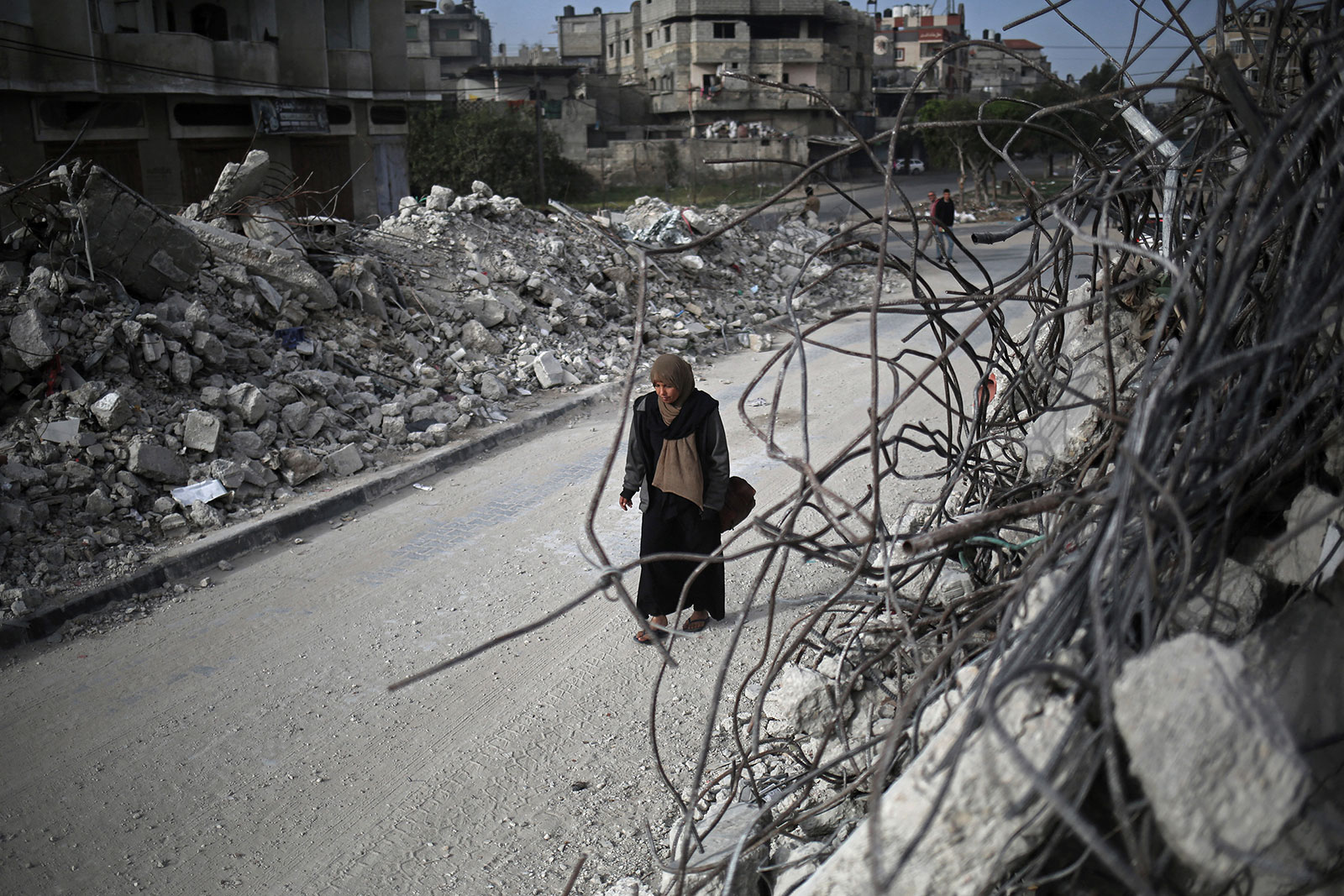The European Union is planning to open an emergency maritime aid corridor from Cyprus to Gaza, EU President Ursula von der Leyen announced on Friday, which she said is aiming to open over the weekend.
It comes a day after US President Joe Biden revealed plans for the US military to establish a temporary port on the Gaza coast. Germany, Greece, Italy, the Netherlands, Cyprus, the United Arab Emirates and the United Kingdom will join in the effort. The "complex" operation will be coordinated with Israel's government, according to a joint statement statement. Israel said it welcomed the plan.
International aid workers and US administration officials have stressed that there must be a “flood” of aid to the people of Gaza, and that the most effective way to do so is via overland crossings.
US officials have claimed for months that the only reason that Israeli Prime Minister Benjamin Netanyahu has shifted on any of his positions regarding the conflict in Gaza is because of efforts by the Biden administration. Biden offered a glimpse into the tensions Thursday after concluding his State of the Union speech, in which he offered a pointed message to the “leadership of Israel” that “humanitarian assistance cannot be a secondary consideration or a bargaining chip.”
Here's what else to know:
Current airdropped aid fails to meet needs: Palestinians in northern Gaza struggle to use the aid recently airdropped by the US and Jordan, because it does not include essential food supplies, according to Abdel Qader Al Sabbah, a journalist based in northern Gaza. “The bodies in charge of these air drops should consider dropping flour, rice, oil, salt, and other seeds and beans, so people here can benefit from these and prepare several meals,” he said, adding that current aid is ready-to-eat meals, which are single portions intended to be eaten the same day, rather than foodstuffs that could be stored and used over several days.
At least 5 killed in a failed aid airdrop: At least five people were killed and 10 others injured on Friday when airdropped aid packages fell on them in the Al-Shati camp west of Gaza City, according to a journalist on the scene who witnessed the incident and then confirmed by a doctor. A video obtained by CNN on Friday shows that the parachute on a pallet of aid apparently malfunctioned.
IDF denies firing at aid convoy: At least 118 Palestinians were killed after Israeli forces opened fire at a Gaza City food distribution site last week, but Israel said its initial investigation found its troops did not fire at the humanitarian convoy, but at a "number of suspects" who approached the nearby forces. CNN cannot independently verify this. The Palestinian foreign ministry rejected the findings, saying Israel "always lies and covers up for its soldiers in order to protect them from accountability and prosecution." It called for an independent international probe. The United Nations said earlier this week that most of the civilians wounded in the incident presented gunshot wounds.
US military says it shot down Houthi missiles and drones: US forces shot down four anti-ship cruise missiles and one drone over Houthi-controlled areas of Yemen on Thursday, US Central Command said. Yemen’s Iran-backed Houthis have been attacking ships in the Red Sea and the Gulf of Aden to pressure Israel and its allies to stop the war in Gaza.





